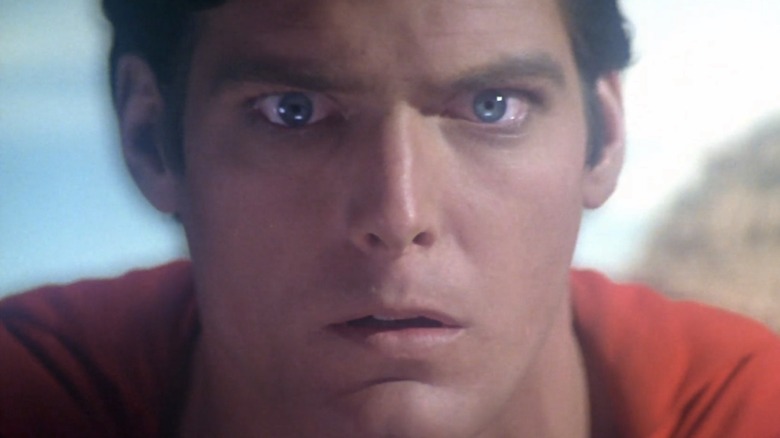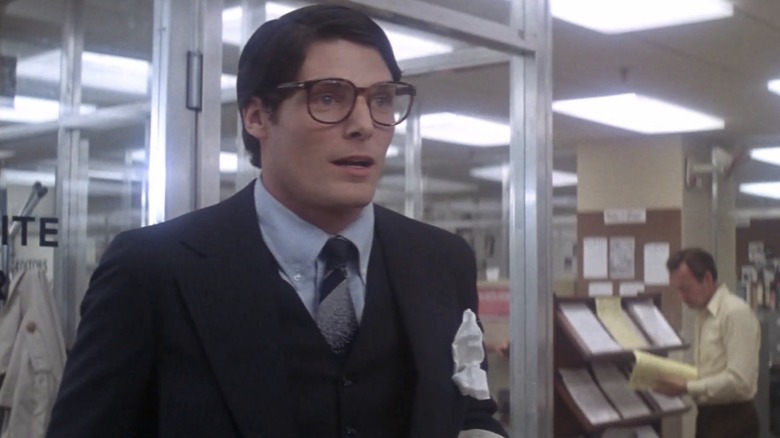Director Richard Donner Hadn't Properly Watched Superman Before The Film's Premiere
Over four decades before the current wave of superhero blockbusters, Richard Donner's "Superman" made audiences believe a man could fly in a way no other movie had before. At the time of its release, "Superman" was the most expensive film ever made. With a runtime pushing two and a half hours, the movie took its time telling the origin story of the Last Son of Krypton and his time in Smallville before his arrival as bumbling newspaper reporter Clark Kent on the streets of Metropolis. Among other things, "Superman" managed to parlay the spot-on casting of Christopher Reeve and an Oscar-nominated John Williams score into critical and commercial success, paving the way for your all your favorite DC and Marvel movies in the new millennium.
The film was not without its share of production problems, however. Tensions between Donner and executive producers Alexander and Ilya Salkind spilled over into his departure from "Superman II," despite the fact that he'd been filming it and the first movie back-to-back and was already 75% done with the sequel. The director told The Hollywood Reporter that he hadn't even properly watched "Superman" before its premiere:
"We were going to take the work print to Los Angeles and have a screening at the studio, because we were editing in London. It was all arranged, and [editor] Stuart Baird and I flew to L.A., and when we get there, I get a call from [Warner Bros. executive] John Calley, who says: 'We've got a big problem. The Salkinds won't release the work print because they say we're trying to steal it.' And I say, 'We can't steal it. They have the negative there.' He said, 'Well, they're claiming that we can make a negative off the work print.' I said, 'No, you can't. That's physically impossible...'"
'I didn't know what I had'
Superman is, of course, no stranger to pulling off impossible tasks; let's not forget that this is the movie where he flies super-fast in reverse around the Earth, spinning it with him to turn back time. His powers also come in handy for his journalistic alter ago, enabling Clark Kent to be the fastest typist his Daily Planet editor has ever seen.
Donner and his crew were only human, however, and as he and the studio hashed things out with the Salkinds, it left him scrambling to finish the movie in time for it to meet its release date. He continued to THR:
"The negative had to be shipped to L.A. and [Warners had to pay the Salkinds] all this money [to do so]. The negative had to be cut, timed, printed. So [there was no time to hold] test screenings. Not one. I saw it at the lab, no audience, without sound. The second one I saw with sound. I didn't know what I had until I saw it with an audience at the premiere. They loved it. I couldn't believe it. It was thrilling."
What Donner went through on "Superman" — working months and months on the film, then being forced to put it out there without really having seen it the way audiences would — is vaguely reminiscent of more recent stories we've heard about the Duffer brothers making last-minute VFX changes to "Stranger Things," then re-uploading them to the Netflix server hours after their official release. They say art is never finished, only abandoned, but in the case of "Superman," it was brought in under the wire and prematurely abandoned. That it turned out as well as it did is nothing short of a superhero feat.

